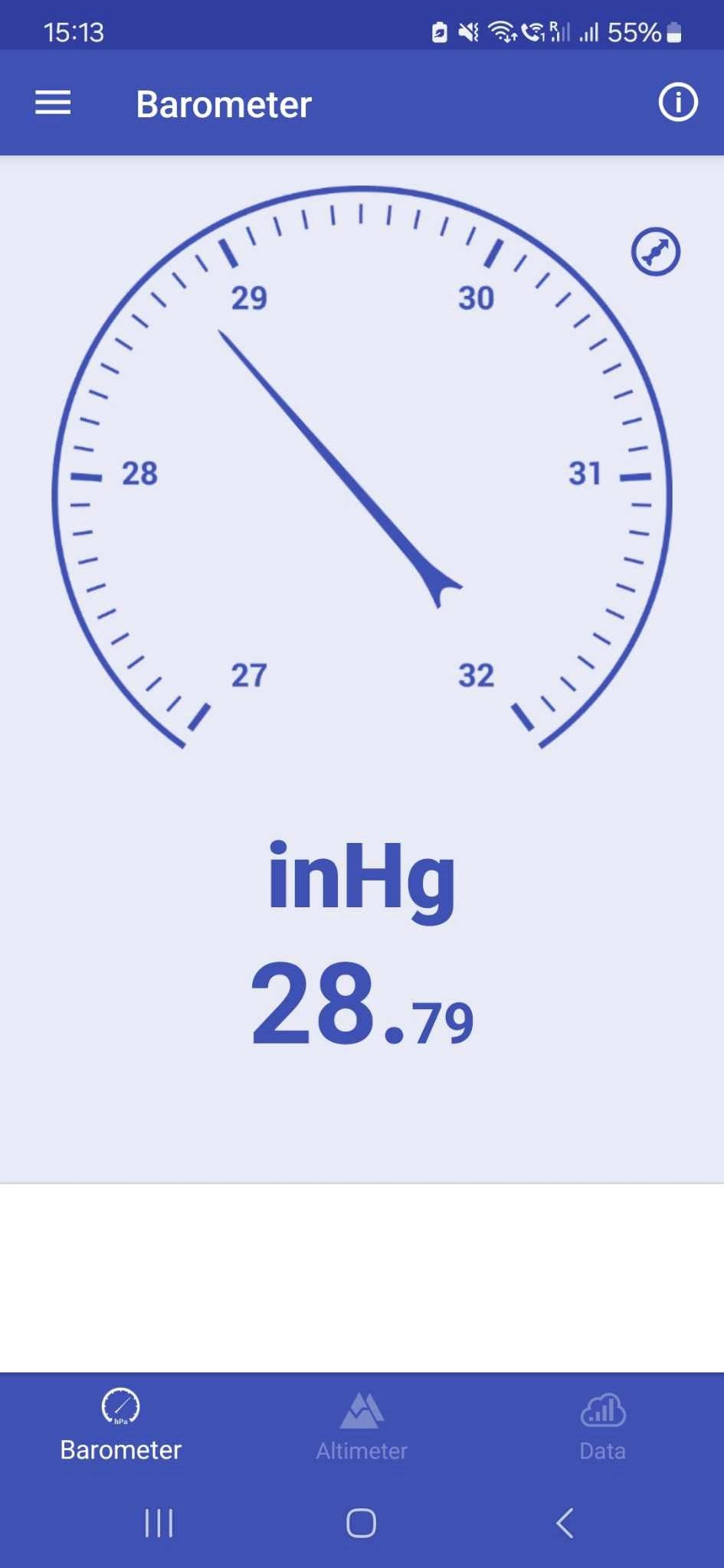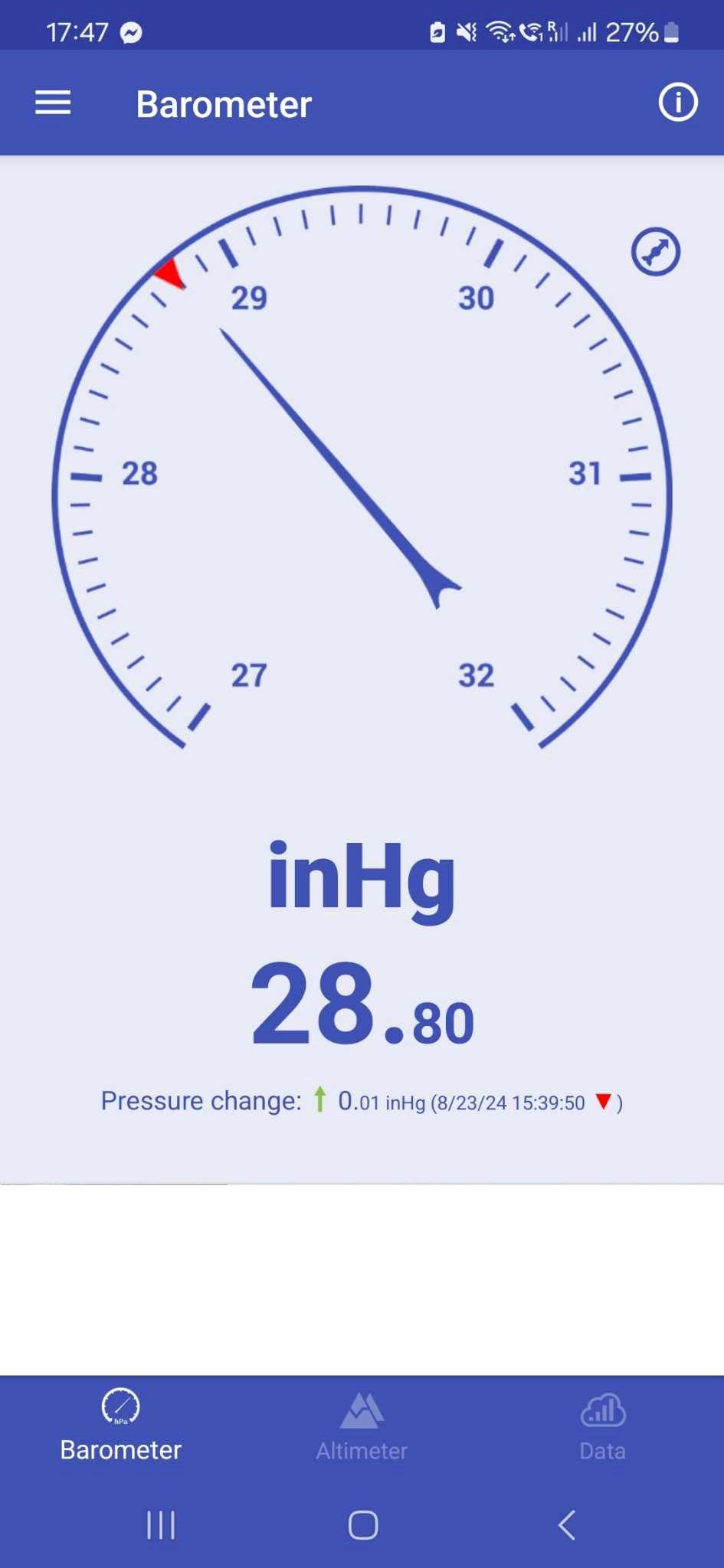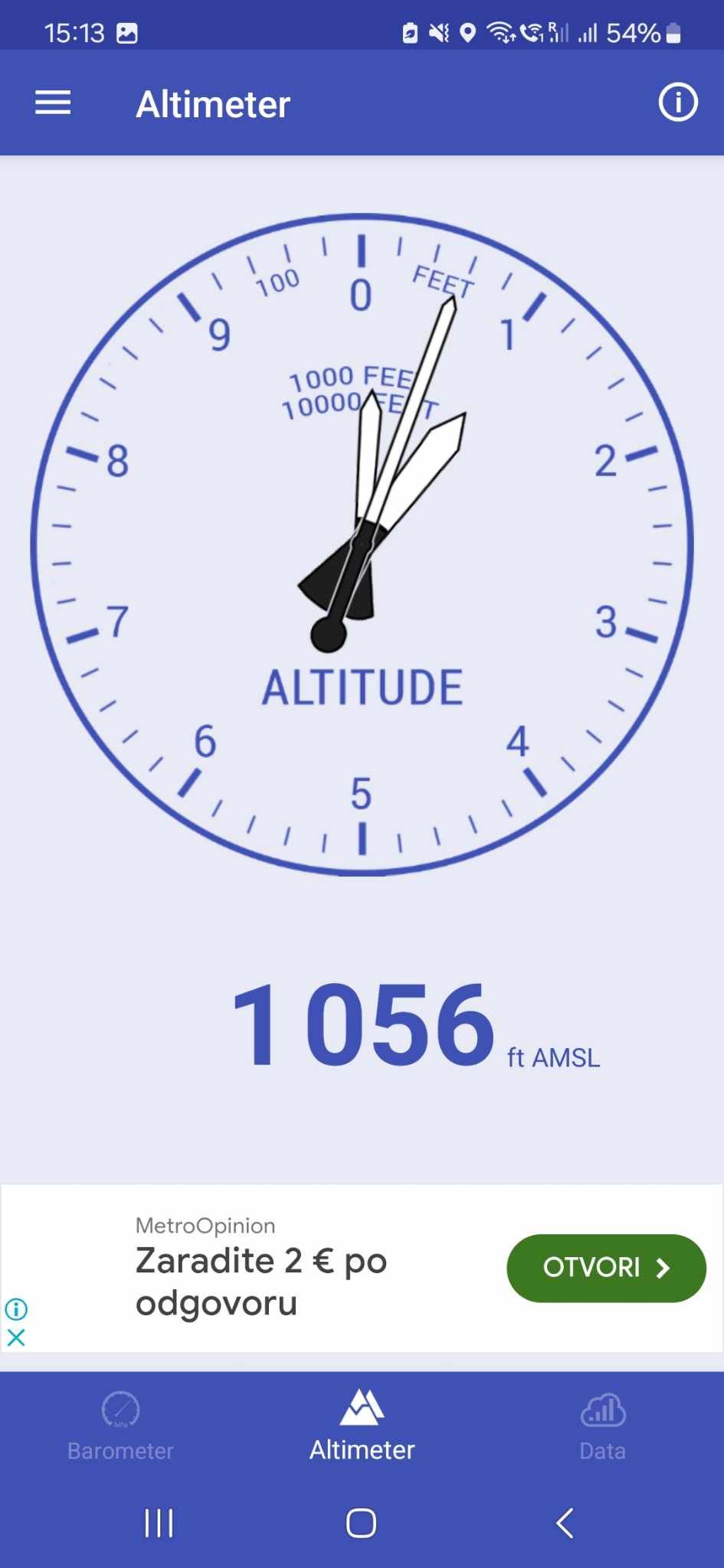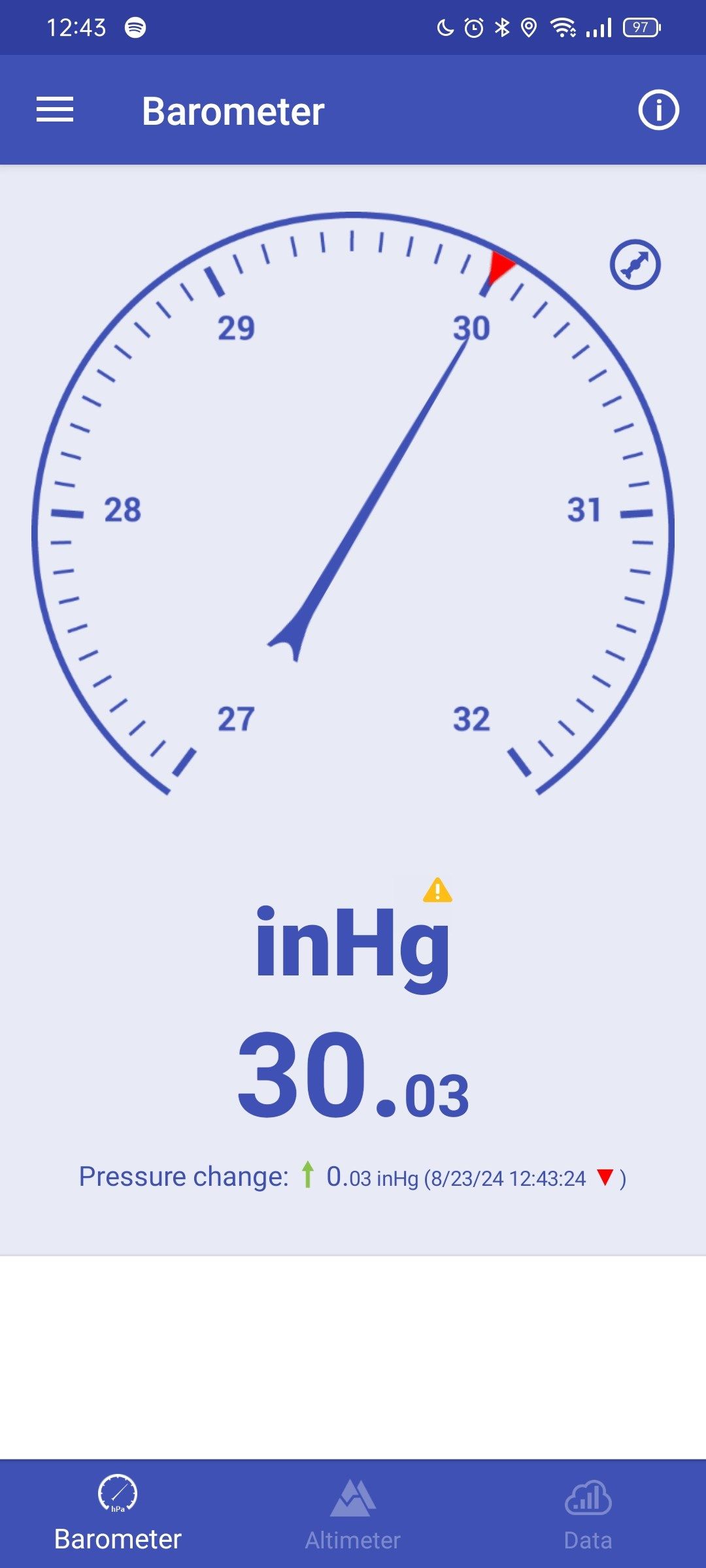Your smartphone already does an amazing variety of things. It’s your camera, navigation guide, and compass. You may not know that it can also function as a real barometer and altimeter, allowing you to predict changes in the weather by monitoring atmospheric pressure, no matter where you are.
How Barometers Work
Many of us have that amateur meteorologist inside of us, so while we can always pull up the weather forecast using an app or a website, it’s a lot more fun to track atmospheric pressure trends on your own using a barometer.
Barometers measure air pressure. There are several kinds of barometers. Torricellian and aneroid are the traditional mechanical barometers you might have seen in the past, and there are the digital barometers as found on your smartphone and high-end outdoorsy watches.
Most modern smartphones have built-in barometers that you can use for the same purpose. Phone manufacturers include barometers to improve GPS elevation results because they can be adversely affected by atmospheric pressure. While you may never have any need or desire to know your current altitude or atmospheric pressure, aspiring meteorologists, hikers, or simply curious folks might really like to know.
Barometers measure atmospheric pressure, so you can get a general sense of what’s going to happen by whether a barometer rises or falls. If the barometer goes up, then that means the weather is going to be fair. If it goes down, then it’s probably going to rain, snow, or indicate some other type of inclement weather.
Today we’ll show you the basics of how to use a barometer app on a smartphone. You can find and download barometer apps for both iPhone and Android, which you can use to do your own weather predictions.
Using Your Smartphone Barometer
On your smartphone, you can use a barometer app to get an idea of how the weather is trending. You can use whatever barometer app you prefer, as they all function in pretty much the same way. Today, we’ll use the free Barometer & Altimeter app by EXAMOBILE S.A., which you can download here on Android and iOS. After downloading and installing the app, give it permission to use your GPS, and the barometer will automatically display the pressure.
As time passes, the needle will move either up or down, which will indicate how your local weather is trending. In the following screenshot, we see that the needle hasn’t moved up a whole lot—that’s because the weather has remained mostly sunny. If it were to move suddenly, then we’d probably need to bring an umbrella tonight!
As you can see, the app has saved the data from the previous time the app was opened. It shows up as a red triangle on the barometer, along with a piece of text describing the pressure change underneath. If it doesn’t automatically load a new reading for whatever reason, you can press the button in the top-right corner to reset the current barometer value.
In addition to being able to predict the weather, you can check your current altitude. It’s important here to keep in mind the difference between altitude and elevation. Elevation is the height at which the land mass you’re standing upon extends above sea level. Altitude is how high you are above the sea or ground level. This particular app only tells us the AMSL (above mean sea level), so we have to manually calculate our AGL (above ground level) by subtracting the elevation.
So, while your phone might be able to tell you how high you are, such as in a plane or when climbing a hill, if you don’t already know your elevation, it won’t tell you how far you are above ground level.
If your phone doesn’t have a built-in barometer, you can still use this app to measure the atmospheric pressure. The app will display a yellow triangle warning you that your device doesn’t have a barometric pressure sensor. Instead, it takes the measurement from the nearest meteorological station via the internet.
Most people like to get altitude readings when they’re hiking or simply out of curiosity, such as when going from place to place. The barometric pressure reading, on the other hand, will typically appeal to anyone who is into DIY weather forecasting. You might find using your iPhone as an impromptu level to be more useful for tasks like hanging pictures.
There are quite a few barometer apps available through iTunes and Android Play, so if you do a simple search for the keyword “barometer,” you can easily find one that suits you.








